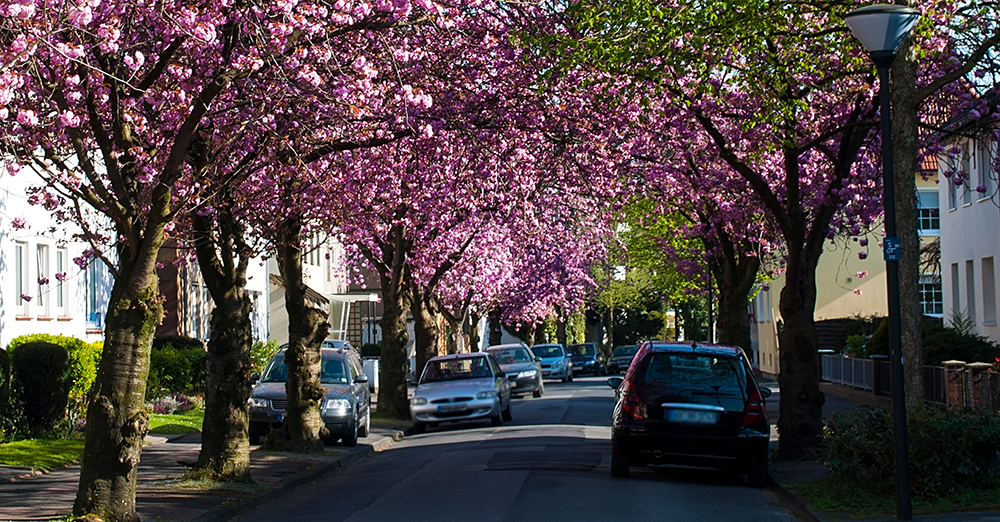Don't Let Pollen, Sap Sabotage Car Luster

Few things mess with a vehicle’s appearance like tree sap and pollen. Together, they make a nasty concoction that bonds to a paint job and doesn’t go without some elbow grease...and the right tools.
“Tree sap has a different mixture of natural resins than tar,” said Mike Schultz, Turtle Wax’s senior vice president of research and product development. “A quality cleaning product usually contains four or five different solvents for removing a wide range of environmental contaminants.”
Schultz suggested using a product specifically designed for cleaning automobiles. Some products may be specifically designed for tar removal. Others combine the kinds of solvents needed for tar, bird droppings, bug goo, pollen and tree sap.
“Always be gentle when removing sap and other contaminants,” Schultz said. “Otherwise you actually damage the surface,” he said.
Sap contains terpene, a naturally occurring solvent used to make turpentine. The thinning properties of sap make it particularly harmful to painted surfaces. Its sugary composition also makes it stick readily to surfaces.
“Hot sun increases the activity of the pine solvent,” Schultz said. “You need to remove sap before it dries.”
Sap gets under the paint and can cause raised bumps on the surface. The pimple-like imperfections are particularly noticeable on white cars or black vehicles with high-gloss finishes.
“Fresh paint is the easiest to stain because it has not fully hardened,” Schultz said.
As a result, new vehicles and recently painted cars are more susceptible to sap damage. Yet, sap can destroy the paint on any vehicle if left on the surface long enough.
Schultz had the following suggestions for vehicle owners who encounter problems with tree sap:
- Remove sap quickly. Left on your vehicle for days or weeks, sap can cause permanent stains to painted surfaces.
- Rinse off your vehicle with a quality car wash product before using a sap-removal product. If your vehicle has a good coat of wax, a basic washing can remove much of the contamination.
- Consider using a sap removal product for globs of sap and heavy concentrations. Look for a product specifically designed for vehicle exteriors.
- Let the sap removal solvent sit for a minute or two before wiping. This allows the solution to soften the sap and loosen it from the surface of the vehicle.
- Avoid harsh household cleaners. They can damage, or strip the clear coat and cause rubber to age.
- Use microfiber towels. The soft fibers help prevent scratching caused by materials such as paper towels and household sponges.
- Carry a spray detailer when traveling. These types of products remove contaminants without requiring you to wash the vehicle.
- Wax your vehicle regularly to provide a layer of protection between the surface and environment.
- Re-apply the wax to areas you have cleaned with a sap removal product.
About Pollen
“Pollen is one of the most common triggers of ‘hay fever’, a.k.a. seasonal allergies. Most of the pollen that cause allergic reactions come from trees, weeds, and grasses and travel by wind,” said Kathleen Slonager, a registered nurse and executive director of the Asthma and Allergy Foundation of America’s Michigan Chapter.
Slonager suggests vehicle owners maintain or replace air filters for maximum protection. While cabin air filters aren’t as efficient as HEPA (High-Efficiency Particulate Air) filters, Slonager said they’re beneficial nonetheless.
“The car systems are a step in the right direction and can offer some relief from allergens. Remember to change the filter according to manufacturer's recommendations. You may need to replace filters more frequently if you drive in heavy traffic or climates where there is a lot of dust,” she said.
Slonager linked seasonal allergies to common culprits.
“Ragweed is a main cause of weed allergies, while mold allergies also come into play in the fall...There’s no cure for seasonal allergies, but there’s plenty of things a person can do to reduce their exposure and fight symptoms.”
Slonager offers the following suggestions for getting through fall seasonal allergies:
- Check pollen levels before outdoor activities. Slonager suggested using a site such as www.pollen.com or www.weather.com.
- Limit your outdoor activity on days with high pollen or mold counts.
- Install a new cabin air filter to keep contaminants from entering through your vehicle’s climate control system.
- On days with high pollen or mold counts, keep windows shut and use air-conditioning whenever possible.
- Frequent vacuuming with a HEPA filter. Don’t underestimate the benefit of regularly vacuuming the upholstery and carpeting, as routine vacuuming reduces allergens’ ability to settle into the fabric.
- Wet and dry dusting. Dust easily clings to the center console and dashboard. Dusting removes particulates but also flings irritants into the air. Dusting with a wet cloth or cleansing wipe prevents more allergens from shuffling about the cabin.
- Freshen up the interior. Avoid cleansers and air fresheners with non-organic materials. They irritate sensitive sinuses. Opt for “eco-friendly” and “clear and free” cleaners.
- Ask your service advisor to check the engine air filter, which can get clogged by spring contaminants. Soiled air filters can lower engine performance and reduce engine life.
- Visit the doctor: Allergic asthma can’t be treated with some over-the-counter products. Your doctor will know if you need a prescription or can recommend an alternative. If you have allergic asthma, talk to your doctor about which medicines may be best for you.
For a full list of tips and potential treatments for spring allergies, visit http://www.aafa.org/page/pollen-allergy.aspx.
Copyright © 2018 by Sensible Driver. All rights reserved.